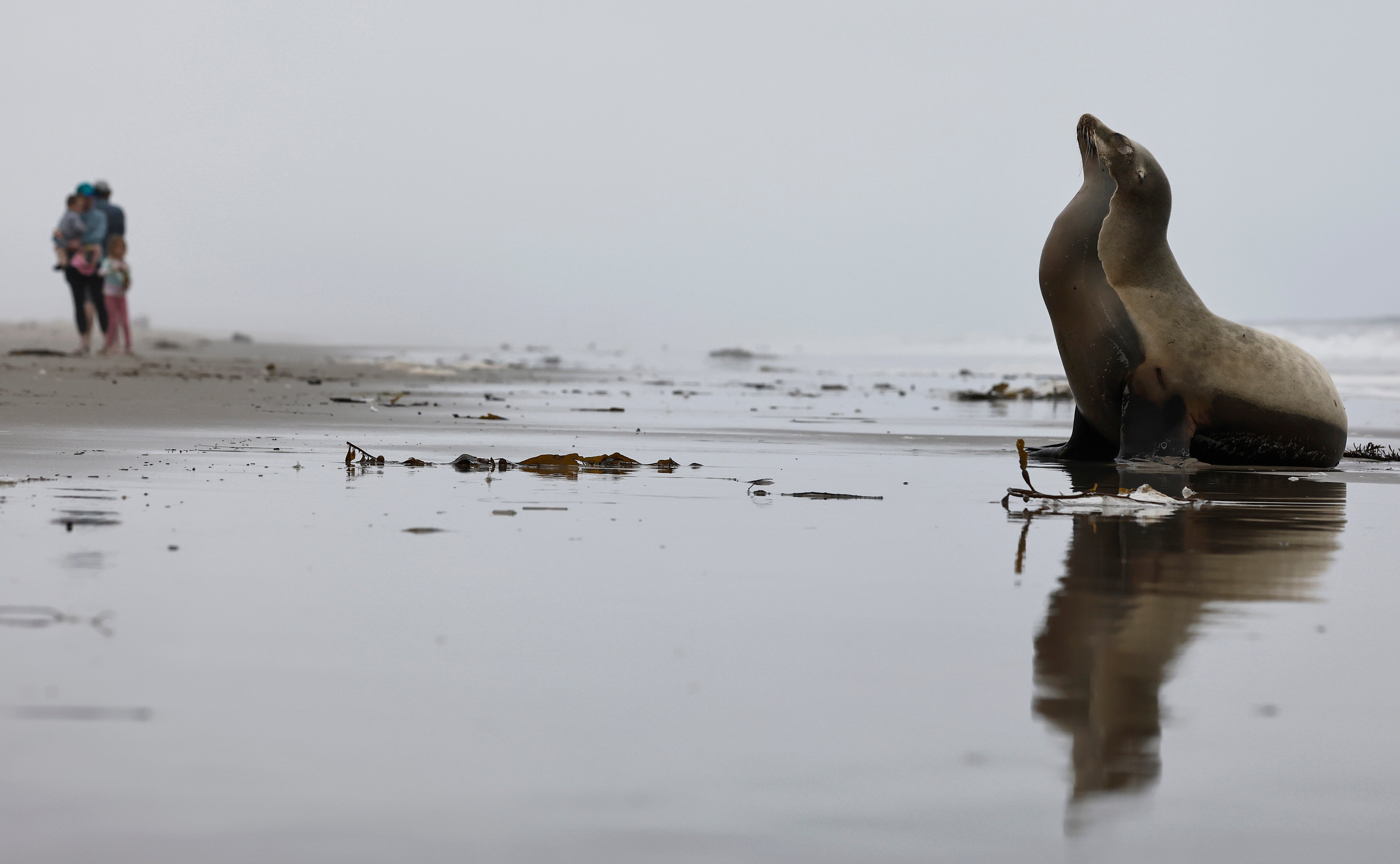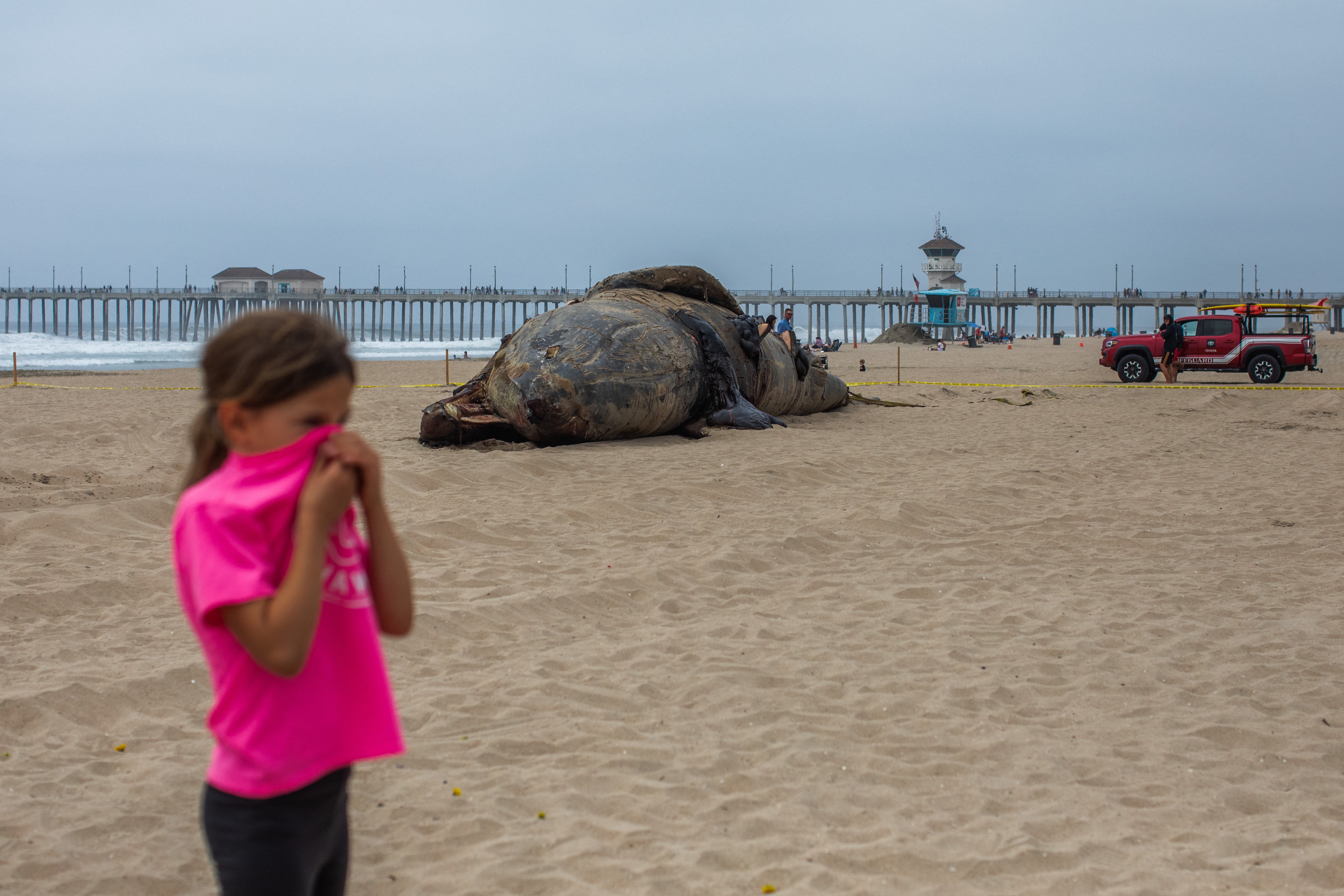ARTICLE AD BOX
Whales, dolphins, and other marine mammals are washing up dead along the California coastline.
A team from the National Oceanic and Atmospheric Administration has collected more than 50 dolphins since March, and four whales have washed ashore in Southern California counties.
After examining the animals, scientists have found that the animals were the victims of neurotoxins produced by a harmful algae bloom. Neurotoxins can affect the nervous system, sometimes leading to death.
“Hundreds of additional dolphins and sea lions have also died in other areas of California since the first domoic acid impacts were detected near Los Angeles in February,” NOAA said in an update this week.
NOAA said that its impacts were not likely to affect dolphins or sea lions at a population scale. More than one million short-beaked common dolphins live around the Golden State, in addition to approximately 250,000 California sea lions.

Most of the dolphins were adult male long-beaked common dolphins, with a few short-beaked common dolphins. However, two were pregnant females.
“The details provide a snapshot of how the ongoing harmful algal bloom is affecting one of the most popular stretches of the Southern California coastline. Of the 14 dolphins tested so far, 11 have had high levels of domoic acid,” NOAA said. “One showed both domoic acid and saxitoxin, a different neurotoxin produced by another marine microorganism that causes paralytic shellfish poisoning.”
Domoic acid is produced by a type of algae called Pseudo-nitzschia australis. The algae’s growth can be driven by the wind-driven upwelling of deep ocean water. The neurotoxin accumulates in fish, which are eaten by marine mammals. The neurotoxin then attacks the brain and heart, causing seizures and permanent brain damage. The animals can be treated with fluids if they are cared for before significant damage occurs — although there is little that first responders can do to help the dolphins.
This event may have been the result of upwelling in mid-February, when the first marine life was reported to have been affected near Malibu.
In March, NOAA said there were upwards of 100 calls a day from people reporting sea lions and dolphins affected by domoic acid.

“We are having to do triage on the beach as we try to identify those animals where we have the greatest chance of making a difference,” John Warner, chief executive officer of the Marine Mammal Care Center in Los Angeles, said.
Beachgoers should remain at a minimum of 50 yards from affected animals, and report stranded marine mammals to the West Coast Marine Mammal Stranding Network hotline at (866) 767-6114.
This marks the fourth consecutive year with a harmful algal bloom off Southern California, and the current bloom began earlier in the year than prior blooms. As ocean temperatures rise, these harmful blooms are becoming more frequent and intense.
“It does take an emotional toll in the field,” Warner said. “Year after year, it’s getting tough. Each of our organizations is trying hard to get to as many animals as we can, but we don’t have the resources to rescue every one that is out there.”









 English (US) ·
English (US) ·